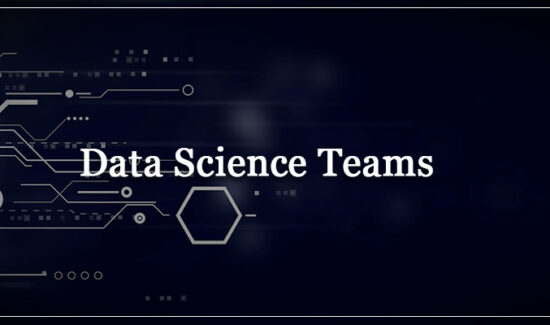10 Ways Generative AI Will Transform the Classroom

Solutions Review’s Contributed Content Series is a collection of contributed articles written by thought leaders in enterprise technology. In this feature, Anaconda‘s co-founder and CEO Peter Wang offers commentary on the top ways generative AI will transform the classroom.
Class is officially in session, and the AI craze is taking schools by storm. Everywhere you look, students and teachers are turning to tools like ChatGPT, and the attitude among many is that this new technology has fundamentally changed education forever – and it’s here to stay.
While the sci-fi vision of a robot in the classroom may be difficult to envision now, AI is already in the classroom, and it’s helping to level the playing field and enhance educational outcomes for students of all backgrounds.
The possibilities that generative AI brings to education will transform the classroom, yet there are also ethical considerations and challenges that must be addressed, like ensuring the quality and accuracy of AI-generated content, navigating privacy concerns, and maintaining a balance between human and AI involvement throughout the learning process. The successful integration of generative AI into the classroom will require careful planning, collaboration, and the ongoing assessment of its impact on learning outcomes and students.
Generative AI’s and the Classroom
Here are ten ways generative AI could transform education and unlock new paths of learning:
- Customized Learning: Each student understands material differently; there are visual and auditory learners, those that learn by observing, and others by experimenting. AI can create customized, independent learning materials by tailoring lesson content and classroom activities to individual students’ learning styles, preferences, and pace, successfully differentiating content for all types of learners.
- Content Creation: Generative AI can assist teachers in generating educational content such as tests, quizzes, and assignments. In turn, teachers can save time and focus on more interactive and personalized teaching methods.
- Automated Grading: Teachers spend five hours of grading each week on average – time that could be spent making deeper connections with students or ideating on new lesson plans. Introducing generative AI to their workflows can save time on the repetitive, manual aspects of grading by automating the process for certain assignments like homework or tests.
- Stronger Student / Teacher Connections: With time-savings a key benefit to incorporating generative AI to the school environment, educators can more easily take a step back from preparing materials and grading to focus on putting the human touch on curriculum planning, the support of social learning, and getting to know students on a more personal level. With this, we can expect the role of the teacher to transition to a coach or mentor in the coming years.
- Tutoring and Extra Support: Generative AI can function as a tutoring system, providing students with instant feedback, explanations, and additional resources as they work through new concepts. As these AI platforms and large language models (LLMs) develop, we can expect to see customized platforms designed specifically for education that is even better for students and teachers.
- Language Learning and Translation: Language models powered by AI can assist in overcoming learning barriers by providing real-time translations, language practice, and context-based language acquisition.
- Collaborative Learning: Facilitating collaborative learning, today’s emerging AI platforms can help students brainstorm ideas, co-create content, and solve problems together, regardless of physical location.
- Critical Thinking and Problem Solving: AI-generated study materials can engage students in critical thinking and problem-solving exercises, rather than just giving them the answer to their question or problem at hand.
- Assistive Technology: For students with disabilities, AI can generate accessible content like providing real-time closed captions or adapting materials to accommodate diverse learning needs or pacing.
- Simulation and Virtual Reality: As mentioned above, there are all types of learners – for some, traditional teaching methods can be challenging, and visual instruction is needed for better understanding. Generative AI can create realistic simulations and virtual reality environments for more complex subjects, enhancing experiential learning.
With these use cases quickly becoming a reality in education, the first and most important step is for school districts and administrators to confront the intricate data challenges already surfacing. This includes preventing biased data from influencing generative AI applications and safeguarding against data breaches and unauthorized data transfers. The emerging data challenges confronting the broader industry will only be amplified within educational systems, necessitating trustworthy data partnerships to instill effective governance over these tools.
Schools are already under immense pressure to keep their data and systems secure. Ransomware has had a devastating impact on school districts across the US with 80% of school IT leaders saying they had been the victim of a ransomware attack. LLMs and AI, which require vast amounts of data, could make schools an even bigger target and underscores the importance of strong cybersecurity practices.
Educators and school administrators need to take into account several crucial considerations as they begin their AI journey. In the short term, there will be a growing need to train more educators in effectively utilizing generative AI tools to harness its potential for automating tasks like creating educational materials, all while addressing issues such as academic dishonesty. Additionally, students will require training on leveraging AI as a self-learning resource, fostering their innate curiosity and enabling them to discern between AI-generated content and reliable sources of information.
While we must tread carefully, AI in the classroom allows educators to focus on what they excel most at: forming connections with their students, teaching core subjects, and inspiring young minds. With this shift, students will have the opportunity to further explore their interests and unleash their creativity. Now, it falls upon school systems and administrators to adapt to this transformation and provide a secure, transformative educational experience.



















